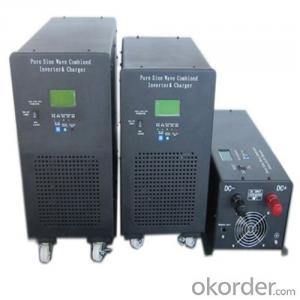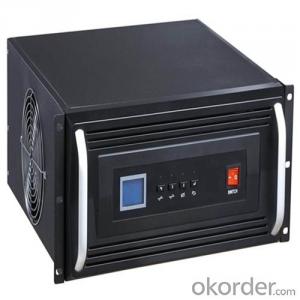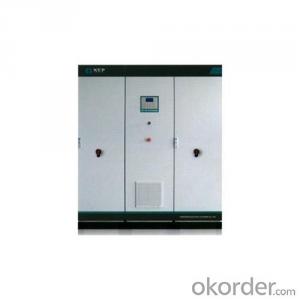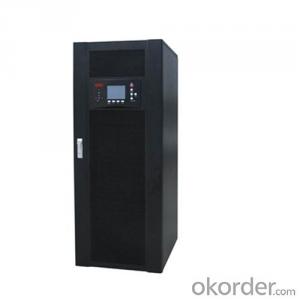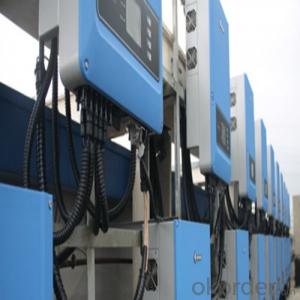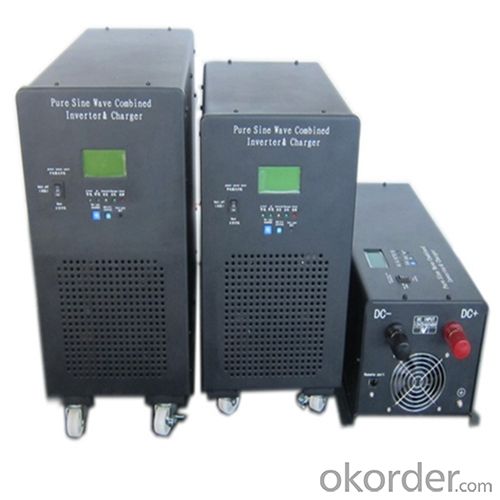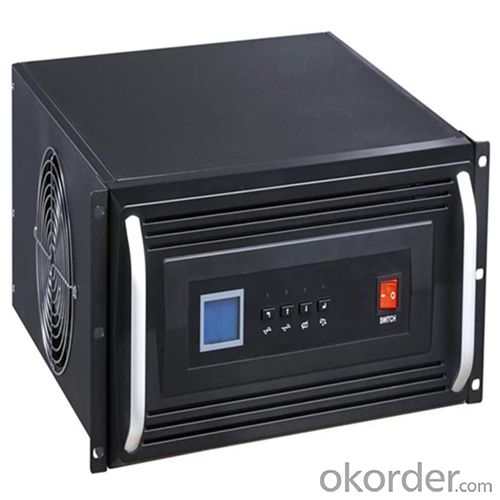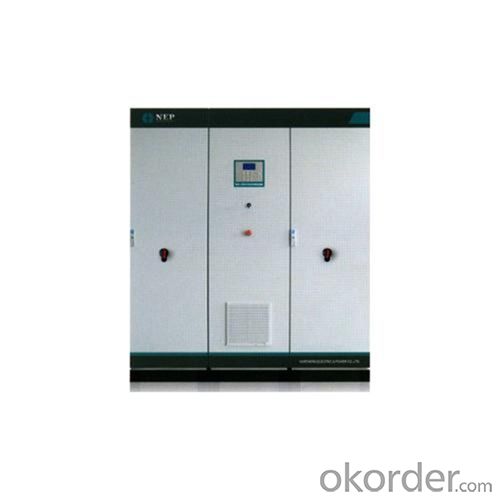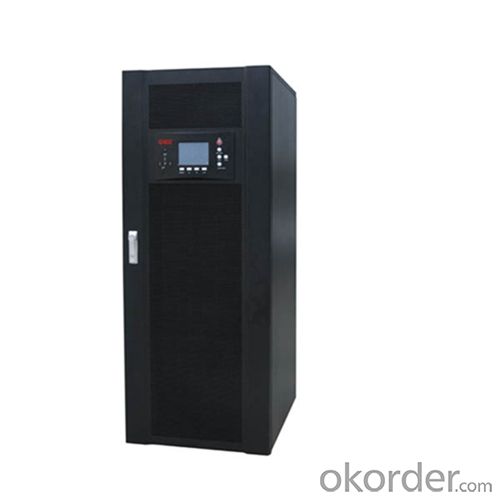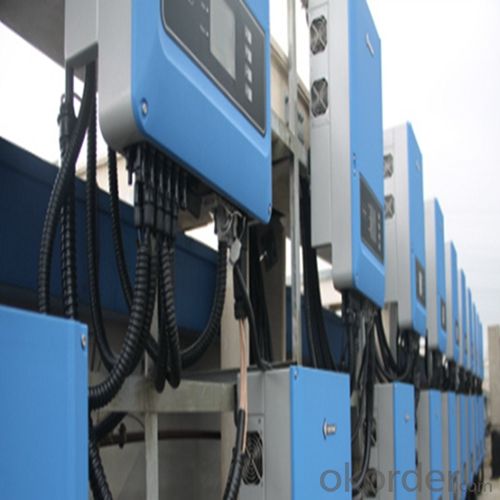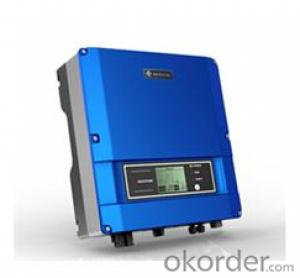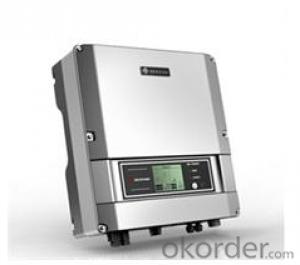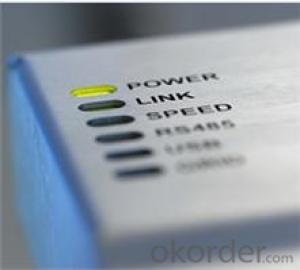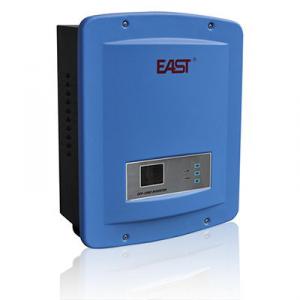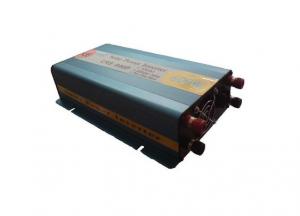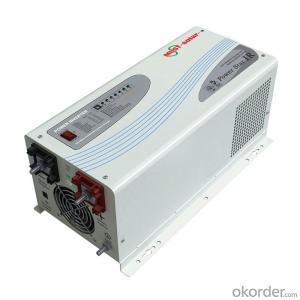600V Approved Solar Power Inverter MPPT Solar
- Loading Port:
- Shanghai
- Payment Terms:
- TT OR LC
- Min Order Qty:
- 5 pc
- Supply Capability:
- 3000 pc/month
OKorder Service Pledge
OKorder Financial Service
You Might Also Like
Performance Characteristics
· 1. Suitable for all electrical equipments
· 2. Large LCD display for more detailed content
· 3. CPU controlled; fast transfer time
· 4. Intelligent battery management, prolonging the service life of the battery
· 5. Complete protection function, high reliability
· 6. Can provide high current charge
· 7. Can match different types of batteries
· 8. Disassembled LCD box which can make the operation in a distance of 15 meters
Product introduction
EP series is sine wave low frequency inverter, which is specifically designed for home appliances. It is equipped with a big LCD screen so all information is displayed in detail, which makes it more convenient to use. Charging current of the inverter is adjustable from 5A to 45A and you can also select different charging voltage to charge different types of batteries so batteries are under great protection.
Our Service
Samples
Samples are Available for Testing and Market Test.
Warranty
We provides warranty against defects in materials and workmanship for its Uninterruptible power supply, Power inverter/chargers including inverter12v 24v 48V, Solar charge controllers (“Product”).
OEM Service
OEM service is strictly based on the ISO9001 ISO14001 quality assurance system. The TOP involves the effective teamwork of departments from Sales, R&D, and Engineering, purchasing, production & QA, assuring a high quality product and prompt delivery for customers. The standardization of our quality system and the quality stability has earned us the trust of our customers for 12 years.
We have 10 sets of automatic insertion equipments, ICT PCB testing equipments, ATE automatic testing center and aging workshop for all products. Monthly output of UPS series exceeds 200,000. We have been offering OEM service for over 12 years.
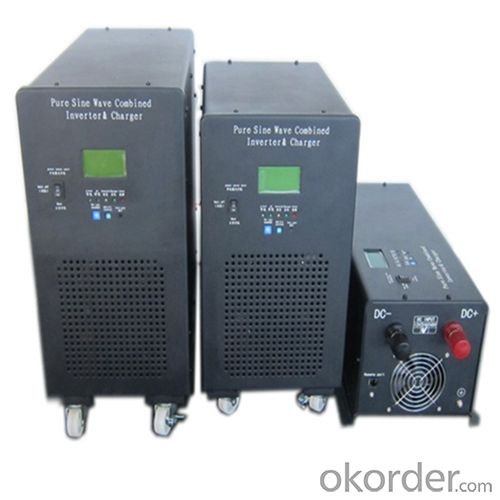
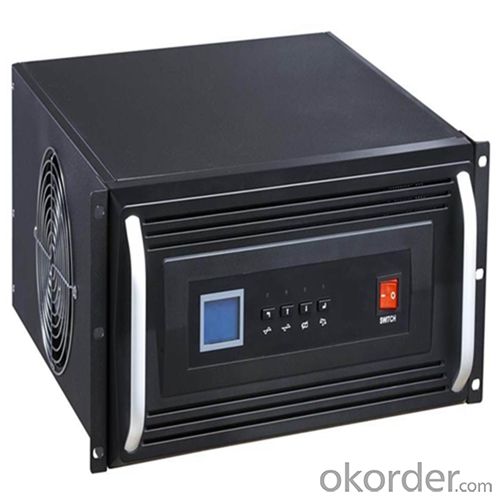
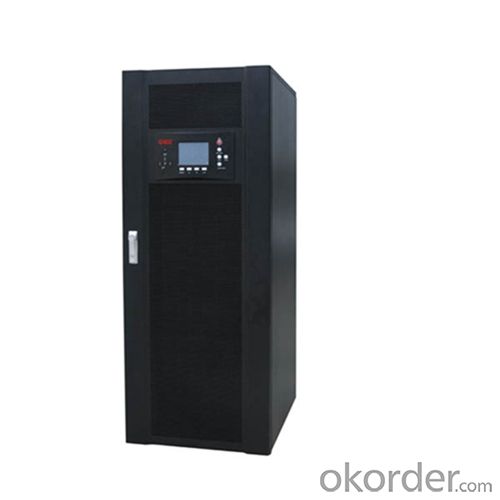
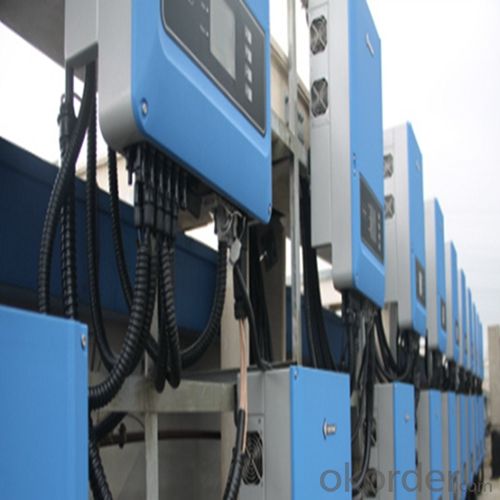
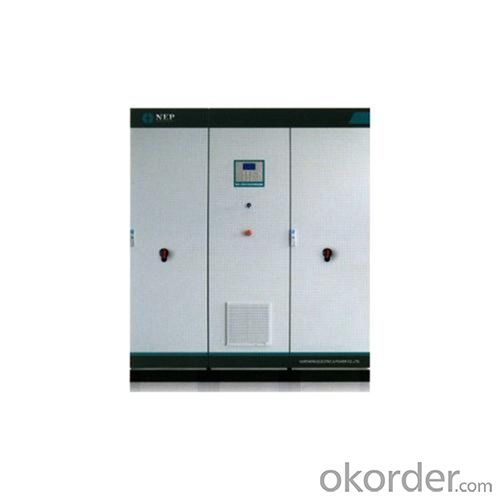
Specifications
Input | |
Input Voltage Range | 182-265VAC |
Output | |
Input Voltage Range | Batt.Mode:50±0.3Hz Mode:48-54Hz(50Hz) or 58-64Hz,Same as AC |
Output Wave Form | Sine Wave (Batt,mode) |
Transfer Time | 10ms(Typical) |
FAQ:
Q: Do you have the CE, TUV, UL Certification?
A: We’ve already passed all the tests, and any certificate is available.
Q: Have you ever sold your products to companies in my country?
A: Of course, we have customers in all general PV markets, but I think we should expand our market share along with the market growth.
Q: When did your company set up? You are a new company, how can I believe your quality?
A: We entered into Solar PV industry in 2005, now we have several plants in manufacturing of a-Si and c-Si panels, and our capacity is 220MW per year. Till now we have already passed all the tests by authorized laboratories, e.g. TUV, CE, UL.
Q: Can you help us install the module if we cooperate with you?
A: We haven’t entered into installation sector, but we have the plan in near future.
Q: How do you pack your products?
A: We have rich experience on how to pack the panels to make sure the safety on shipment when it arrives at the destination.
Q: Can you do OEM for us?
A: Yes, we can.
Q: Can we visit your factory?
A: Surely, I will arrange the trip basing on your business schedule.
- Q: Can a solar inverter be used with different types of backup power configurations?
- Yes, a solar inverter can be used with different types of backup power configurations. Solar inverters are designed to convert the DC power generated by solar panels into AC power that can be used in homes or businesses. They can be used with backup power systems such as battery banks, diesel generators, or grid-tied systems with net metering. The inverter's ability to synchronize with different backup power sources allows for efficient and reliable energy supply in various configurations.
- Q: Can a solar inverter be used with solar-powered recreational vehicles (RVs)?
- Yes, a solar inverter can be used with solar-powered recreational vehicles (RVs). Solar inverters convert the direct current (DC) generated by the solar panels into alternating current (AC) that can be used to power various appliances and devices in the RV. This allows RV owners to utilize solar energy for their electrical needs while on the road.
- Q: Can a solar inverter be used with a solar-powered air cooling system?
- Yes, a solar inverter can be used with a solar-powered air cooling system. The solar inverter would convert the direct current (DC) electricity produced by the solar panels into alternating current (AC) electricity, which can then be used to power the air cooling system. This allows the system to operate efficiently and effectively using solar energy.
- Q: Can a solar inverter be used with solar-powered air conditioning systems?
- Yes, a solar inverter can be used with solar-powered air conditioning systems. The solar inverter is responsible for converting the direct current (DC) generated by the solar panels into alternating current (AC) that can be used to power various electrical appliances, including air conditioning units. By connecting the solar inverter to the solar panels and the air conditioning system, the generated solar energy can be efficiently utilized to power the AC system.
- Q: How efficient are solar inverters?
- Solar inverters are highly efficient, with most modern models achieving efficiency levels above 95%. This means that they can convert a large majority of the direct current (DC) electricity generated by solar panels into alternating current (AC) electricity for use in homes or businesses. The high efficiency of solar inverters helps maximize the overall energy output and financial benefits of solar power systems.
- Q: Why is a solar inverter necessary in a solar power system?
- A solar inverter is necessary in a solar power system because it converts the direct current (DC) produced by solar panels into alternating current (AC) that can be used to power household appliances and be fed back into the grid. Without a solar inverter, the DC power generated by solar panels would be incompatible with the electrical grid and unable to be utilized effectively.
- Q: What are the common troubleshooting steps for a malfunctioning solar inverter?
- The common troubleshooting steps for a malfunctioning solar inverter typically include checking the connections and cables for any loose or damaged parts, inspecting the inverter display for error messages or warning lights, resetting the inverter by turning it off and on, and ensuring that the solar panels are receiving sufficient sunlight. If these steps do not resolve the issue, it may be necessary to consult a professional technician or the manufacturer for further assistance.
- Q: Are there any limitations on the angle of the solar panels when using a solar inverter?
- Solar panels must adhere to certain limitations in terms of their angle when using a solar inverter. The efficiency and overall performance of solar panels can be influenced by the angle at which they are installed. Ideally, solar panels should be positioned at an angle that allows them to receive the maximum amount of sunlight throughout the day. Typically, solar panels are designed to function optimally when installed at an angle that matches the latitude of the location. This angle enables the panels to capture the most sunlight during peak hours. However, this is not an absolute rule, as variations are feasible depending on specific location and climate conditions. If solar panels are installed at angles that are excessively steep or shallow, it can result in decreased energy production. Steep angles may cause sunlight to be lost during certain times of the day, while shallow angles may not allow for optimal sunlight absorption. Moreover, extreme angles can increase the risk of damage from wind or other weather conditions. It is worth noting that modern solar inverters often incorporate advanced tracking and monitoring technologies, which can adapt to different panel angles and orientations. These features can optimize energy production by adjusting the inverter settings based on the real-time performance of the panels. Ultimately, while there are limitations concerning the angle of solar panels, it is crucial to ensure that they are installed in a manner that maximizes their exposure to sunlight throughout the day, in order to achieve the highest possible energy production.
- Q: Can a solar inverter be used with a solar-powered electric fence system?
- Yes, a solar inverter can be used with a solar-powered electric fence system. The solar inverter is responsible for converting the DC (direct current) power generated by the solar panels into AC (alternating current) power, which can be used to power the electric fence system. This ensures that the solar-powered electric fence system can operate efficiently and effectively, utilizing the energy harnessed from the sun.
- Q: How does the size of a solar inverter affect its performance?
- The size of a solar inverter directly impacts its performance. A larger inverter with a higher wattage capacity can handle a greater amount of solar power generated by the panels. On the other hand, a smaller inverter may not be able to efficiently convert and utilize all the energy produced, resulting in a decrease in overall system performance. Therefore, choosing the appropriate size solar inverter is crucial to ensure optimal performance and maximize energy production.
Send your message to us
600V Approved Solar Power Inverter MPPT Solar
- Loading Port:
- Shanghai
- Payment Terms:
- TT OR LC
- Min Order Qty:
- 5 pc
- Supply Capability:
- 3000 pc/month
OKorder Service Pledge
OKorder Financial Service
Similar products
Hot products
Hot Searches
Related keywords
